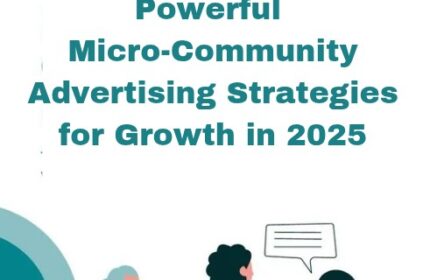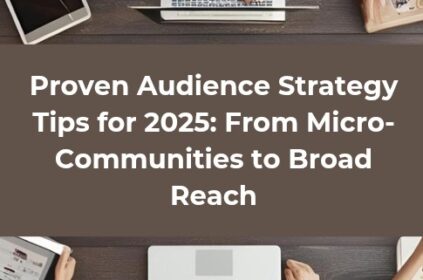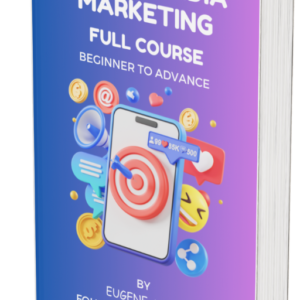Ready to turn your LinkedIn profile into a magnetic hub for connections and opportunities? Join us on a journey through the intricacies of LinkedIn marketing, where we unravel the eight keys that will not only capture attention but elevate your profile views to new heights.
LinkedIn has evolved beyond a mere professional networking platform; it has become a powerful tool for marketers to showcase their brand, connect with industry professionals, and generate business opportunities.
In the fast-paced digital landscape, where networking plays a crucial role, LinkedIn stands out as a platform that enables users to establish a professional online presence.
The number of views your LinkedIn profile and content receive directly correlates with your marketing success on the platform. Increased views translate to broader reach, enhanced brand visibility, and a higher likelihood of engaging with potential clients or partners.
In this simple guide, we will delve into eight key strategies to boost your LinkedIn views during marketing efforts, helping you harness the platform’s full potential. Let us dive in!

1: Optimize Your LinkedIn Profile
Your LinkedIn profile is your digital home, and like any good home, it should be welcoming and informative. This is where potential connections and collaborators come to learn about you and your expertise.
To maximize your visibility and attract the right connections, consider these key areas:
#1. Headline: Craft a clear and concise headline that encapsulates your professional identity. Include relevant keywords that your target audience might search for, along with a hint of your unique value proposition.
Think “Marketing Leader | Driving Growth Through Data-Driven Strategies” instead of simply “Marketing Professional.”
#2. Summary: Tell your professional story in an engaging and impactful way. Highlight your achievements, showcase your skills, and explain how you can add value to others.
Quantify your results whenever possible to demonstrate the impact you’ve made. Avoid simply listing job descriptions; focus on achievements and the value you bring.
#3. Visuals: Make a strong first impression with high-quality visuals. Choose a professional headshot that is clear and friendly, and consider using a banner to showcase your skills or current projects.
#4. Endorsements: Encourage connections to endorse your expertise in relevant areas. These endorsements add credibility and social proof, making your profile more appealing to potential connections.
#5. Keywords: Strategically integrate keywords throughout your profile, including your headline, summary, and experience sections. This helps you rank higher in searches and ensures your content reaches the right audience.
#6. Experience: Don’t just list your past jobs. Describe your achievements in each role, using specific examples and quantifiable results. Numbers speak volumes, so demonstrate your ability to deliver tangible outcomes.
#7. Recommendations: Testimonials are powerful social proof. If you have positive recommendations from colleagues or clients, prominently display them on your profile. This boosts trust and makes you have a more attractive connection.
Remember, your LinkedIn profile is an extension of your professional brand. By optimizing it with these tips, you’ll attract the right connections and position yourself as a valuable member of the LinkedIn community.
2. Knowing Your Audience Matters
Ever feel like your LinkedIn content is lost in a sea of noise? You craft insightful posts, share valuable tips, but engagement remains elusive. The missing piece? Understanding your audience.
On LinkedIn, success isn’t about shouting into the void; it’s about targeted communication. To truly resonate, you need to know who you’re talking to: their professional lives, their biggest challenges, and what sparks their curiosity. This is where your ideal customer persona comes in.
Tailoring your content to the specific needs and interests of your target audience is key to capturing their attention and leaving a lasting impression.
So, who are these ideal connections you’re aiming to reach? Consider:
- Industry: What professional landscapes do they inhabit? Architects building innovative structures, data analysts sifting through insights, or entrepreneurs chasing ambitious dreams? Pinpoint their industry to speak their language.
- Challenges: What are their pain points and frustrations? Budget constraints, tight deadlines, or the constant struggle to stay ahead of the curve? Identify their challenges to offer solutions and advice.
- Interests: What fuels their professional passion? Cutting-edge tech trends, sustainable business practices, or effective leadership strategies? Understand their interests to create content that truly piques their curiosity.
- Online Behavior: How do they navigate the LinkedIn ecosystem? Active participants in group discussions, avid readers of industry articles, or silent observers? Knowing their online behavior helps you reach them where they are.
Building this detailed picture of your ideal audience isn’t just about demographics; it’s about understanding their aspirations, anxieties, and hunger for knowledge.
The more you know, the more you can craft content that speaks directly to their needs and positions you as a valuable resource on their professional journey. Learn more Ways To Target The Right Audience Online.
3. Create and Share High-Quality Content

Quality content is the backbone of a successful LinkedIn strategy. Focus on creating content that provides value to your audience. Share insights, tips, and industry knowledge that showcase your expertise and resonate with your target audience.
Craft your posts and articles with attention-grabbing headlines and concise, well-structured content. Use visuals, such as images and videos, to enhance engagement. Encourage discussions by asking questions and responding to comments on your posts.
Utilize multimedia elements such as images and videos. Visual content is highly engaging on LinkedIn. Incorporate images, infographics, and videos into your posts to capture attention. Multimedia content not only stands out in the LinkedIn feed but also increases the likelihood of your content being shared.
4. Leverage LinkedIn’s Algorithm
LinkedIn uses an algorithm to determine the visibility of your content. Familiarize yourself with the basics of the algorithm, which includes factors such as engagement, relevance, and recency. Aligning your strategy with these principles can significantly impact your content’s reach.
Engagement, including likes, comments, and shares, plays a crucial role in the LinkedIn algorithm. Encourage your network to interact with your content by posing questions, responding to comments, and participating in discussions. Increased engagement signals relevance to the algorithm, leading to higher visibility.
Stay updated on changes to the LinkedIn algorithm and adjust your strategy accordingly. Experiment with different types of content, posting times, and engagement tactics. Consistently adapting to the algorithm’s nuances will enhance your content’s chances of appearing in the feeds of your target audience.
5. Actively Engage with Your Network
Expand your network strategically by connecting with professionals in your industry. Actively seek out individuals who share similar interests, belong to relevant groups, or work in complementary fields. A diverse and well-connected network increases the visibility of your profile and content.
Comment on and share content from your network. Engagement is a two-way street. Regularly comment on and share content from your connections. This not only shows support for your network but also increases the likelihood of reciprocity, leading to more visibility for your own posts.
Leverage direct messages to initiate meaningful conversations with your connections. Avoid generic messages and focus on building genuine relationships. Personalized interactions can lead to increased engagement with your content and enhance your overall visibility.
6. Participate in LinkedIn Groups

Search for and join LinkedIn groups that align with your professional interests and goals. Engage in groups related to your industry, niche, or areas of expertise. Participating in these communities allows you to connect with like-minded professionals and increases the visibility of your profile.
Actively participate in group discussions by sharing your insights, answering questions, and providing valuable information. Thoughtful contributions position you as an authority in your field, attracting more attention to your profile and content.
Use group participation as an opportunity to showcase your expertise. Share relevant articles, ask thought-provoking questions, and connect with group members. Building relationships within groups can lead to increased profile views and engagement.
7. Optimize Posting Times
Identify when your target audience is most active on LinkedIn. This may vary based on industry, job roles, and geographic locations. Utilize LinkedIn Analytics to analyze the performance of your past posts and identify patterns in engagement. This data will guide you in determining the optimal times to share your content.
Once you’ve identified the peak activity times, schedule your posts accordingly. Using LinkedIn’s scheduling feature ensures that your content reaches your audience when they are most likely to be online. Consistent posting during these optimal times enhances the visibility of your content in the LinkedIn feed.
Test different posting frequencies to find the right balance for your audience. While consistency is key, it’s important to avoid overwhelming your network with too many posts. Experiment with posting at different intervals and assess the impact on views and engagement.
8: Analyze and Adjust Your Strategy

Regularly monitor LinkedIn Analytics to gain insights into the performance of your profile and content. Track metrics such as profile views, post reach, and engagement rates. Analyzing this data provides valuable information about what is resonating with your audience and what may need adjustment.
Look for trends and patterns in the posts that have garnered the most views and engagement. Identify common themes, formats, or topics that resonate with your audience. This analysis helps you refine your content strategy to focus on what works best for increasing visibility.
Based on your analytics, make informed adjustments to your LinkedIn marketing strategy. This may involve refining your content style, tweaking posting times, or experimenting with different types of media. Adapting your approach based on performance data ensures continuous improvement and increased effectiveness over time. Take your learning further to learn how to understand the basics of LinkedIn Marketing and Advertising.
Conclusion
In this comprehensive guide, we’ve explored eight key strategies to boost your visibility during marketing efforts. From optimizing your profile to leveraging the platform’s algorithm, each key plays a crucial role in enhancing your visibility and engagement on LinkedIn.
It’s essential to recognize that successful LinkedIn marketing is an ongoing process. Consistency, adaptability, and a commitment to refining your strategy based on analytics are key to sustained growth.
By implementing these strategies and continuously optimizing your approach, you’ll position yourself for long-term success on the platform. Please share your thoughts with us in the comments below. Let us build a community of successful online advertising together.









